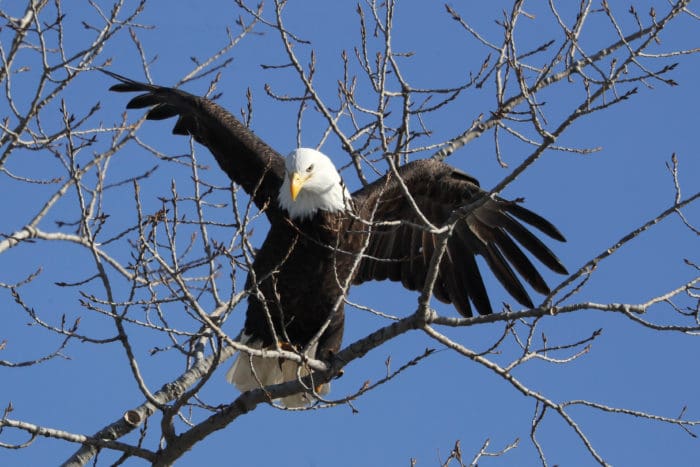The Department of the Interior announced that America’s bald eagles have come soaring back. Outdoorsmen and women have been celebrating this for decades, but local news reporting is missing the picture.
“‘A tough bird.’ Rescued eagle in Raleigh fights to stay alive after lead poisoning,” reads one headline. “Bald eagles in N.C. are fighting for survival — from lead poisoning,” says another. “Getting the lead out: Wildlife rescuers desperate to save bald eagles from being poisoned,” reads one more.
It’s a deceptive narrative with a goal to shame America’s hunters and push counterintuitive bans on traditional lead-based ammunition.
Flying High
The good news is remarkable. America’s bald eagles have recovered from near extinction. In 1963, there were only 417 nesting pairs. Those dire days are long gone. The Department of the Interior released a 2020 U.S. Fish and Wildlife Service (USFWS) report celebrating that there are 71,400 nesting pairs in the lower 48 states, and more than 316,000 individual birds. The bald eagle population has quadrupled since 2009.
Interior Secretary Deb Haaland praised the bald eagles’ return. “Today’s announcement is truly a historic conservation success story,” she said. U.S. Fish and Wildlife Service Principal Deputy Director Martha Williams added her praise. “The recovery of the bald eagle is one of the most well-known conservation success stories of all time.”
Bald eagles are thriving.
Narratives
It’s unfortunate when an eagle is brought to a rescue facility. Some are injured after ingesting lead. Suspicions arise that it is from carrion tainted with lead fragments from hunters’ bullets or anglers’ fishing weights. Reports never account for eagles at landfills or other sources of contamination.
The Raleigh News and Observer reported on a bald eagle brought to the American Wildlife Refuge (AWR) in Raleigh, North Carolina, after ingesting lead. Suspicions tied injuries to hunting, but it is never proven. In the report, the American Eagle Foundation named lead poisoning as a “leading concern” for birds of prey and that “millions” are affected each year. The News and Observer also reports the AWR “treated four other bald eagles in all of the past year.”
AWR Director of Animal Care Steve Stone blamed hunters. “This is not a first-time thing. This has pretty much become the routine, and will be the routine until that law comes to be.”
That’s belied by the paper’s previous reporting, though. The News and Observer once reported on North Carolina’s bald eagles’ return. “The eagles have made a remarkable recovery, both in North Carolina and nationwide,” the paper reported. “The birds were removed from the list of threatened and endangered species in 2007 because their numbers had increased so much.”
Similar narratives appear elsewhere. The Bangor Daily News called for a lead ammunition ban. “The science is clear: We are killing our bald eagles with our use of lead ammunition in hunting, forcing them to die slowly and inhumanely.”
They didn’t bother with the research or science. In 1962, there were 27 nesting pairs of bald eagles in Maine. Today there are “a robust 734 nesting pairs.”
It’s the same in Minnesota, North Dakota and all across America. Bald eagles are thriving.
Motives
Anti-hunting and gun control groups push traditional ammunition bans for ulterior motives. Sometimes it’s to limit hunting. Some know nontraditional ammunition is more expensive and requiring it would price some gun owners out of the market.
What is lost is that bald eagle recovery is directly tied to firearm and ammunition manufacturers paying excise taxes and hunters supporting them.
The firearm and ammunition industry has contributed more than $13.6 billion in Pittman-Robertson excise taxes since 1937. These funds, combined with hunting and fishing license revenues, are apportioned to states for conservation projects and wildlife management, including bald eagle recovery.
States pushing traditional ammunition bans, like Oregon, Washington, California and others, harm conservation by reducing the population of hunters and limiting conservation funding.
News reports often look to find someone to blame. Instead, they might see the truth about eagle recovery…if they’d bother to look up.
Larry Keane is SVP for Government and Public Affairs, Assistant Secretary and General Counsel of the National Shooting Sports Foundation.
